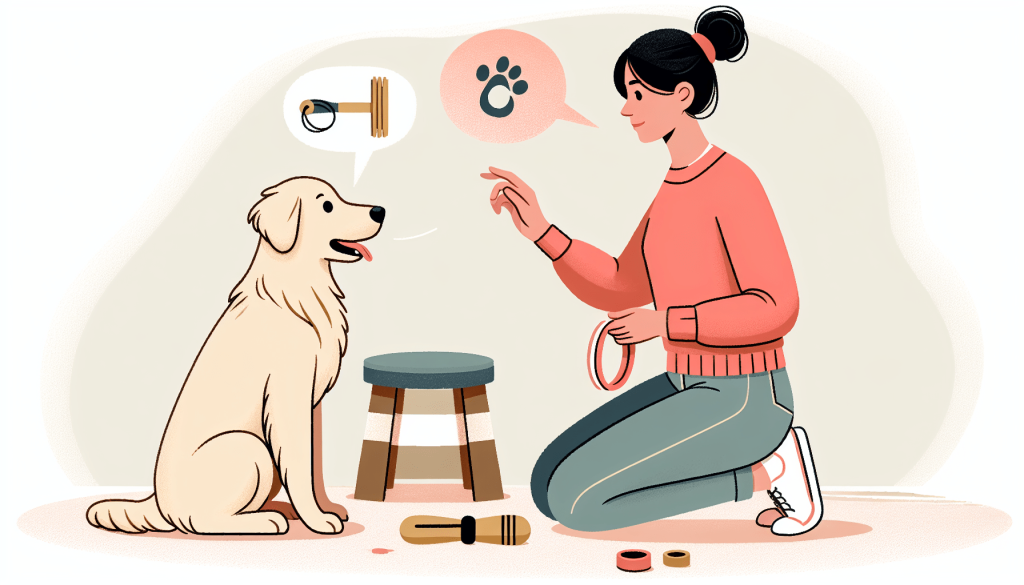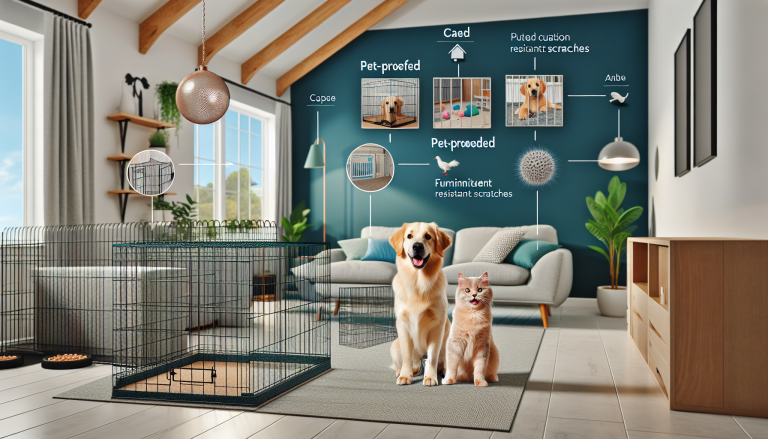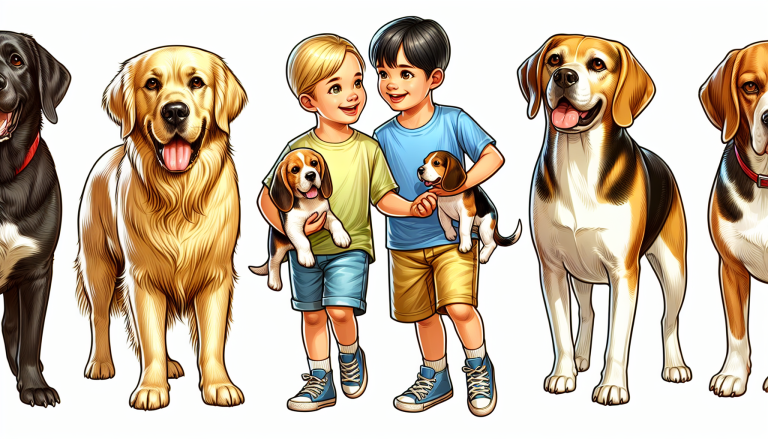So you’ve decided to train your furry friend and teach them some basic commands! Whether you’re a new dog owner or just looking for some tips to reinforce your pup’s existing training, this article has got you covered. From sit and stay, to come and leave it, we’ll provide you with valuable training tips to make the learning process fun and rewarding for both you and your dog. So grab your dog’s favorite treats, put on a smile, and let’s get started on this wonderful journey towards a well-behaved and obedient canine companion!
Table of Contents
TogglePositive Reinforcement
Training your dog using positive reinforcement is not only effective but also creates a strong bond between you and your furry friend. By focusing on rewards, verbal praise, and physical affection, you can motivate and encourage your pup to learn new commands. Remember, dogs are eager to please their owners, and a pat on the back or a tasty treat can go a long way in reinforcing their good behavior.
Use rewards
Using rewards, such as treats or favorite toys, is an excellent way to reinforce positive behavior. Whenever your dog follows a command correctly or displays good behavior, reward them immediately. This positive association encourages them to repeat these actions in the future. Make sure to choose rewards that your dog finds enticing and keep them easily accessible during training sessions.
Use verbal praise
Alongside treats and toys, giving your dog verbal praise is a powerful form of positive reinforcement. Dogs are highly responsive to their owner’s voice, so use a cheerful and enthusiastic tone when praising them. Simple phrases like “good job” or “well done” accompanied by a warm smile can communicate your satisfaction and increase your dog’s motivation to continue learning.
Use physical affection
Physical affection is another powerful tool in positive reinforcement training. Dogs thrive on physical contact and enjoy being rewarded with gentle cuddling, scratching, or belly rubs. Use this form of affirmation to celebrate your dog’s successes during training sessions. A pat on the head or a loving hug can convey your approval and strengthen your bond with your furry companion.
Consistency
Consistency is key when training your dog. Establishing a routine, using the same commands, and avoiding mixed messages will help your pup understand what is expected of them and make the learning process smoother.
Establish a routine
Creating a consistent training routine is beneficial for both you and your dog. Find a time that works for both of you and dedicate that time solely to training. Dogs thrive on predictability, so by implementing a regular training schedule, your furry friend will be more focused and receptive to learning.
Use the same commands
Using consistent commands is essential for effective training. Decide on the specific words or phrases you want to use for each command and stick to them. For example, if you want your dog to sit, choose a word like “sit” and use it consistently. This will prevent confusion and help your dog associate the command with the desired action.
Avoid mixed messages
One common mistake many dog owners make is unintentionally giving mixed messages. It’s important to be clear and consistent with your expectations. For example, if you’re teaching your dog to stay off the furniture, don’t let them on occasionally as this will only confuse them. Consistency in your actions will help your dog understand what is acceptable behavior and what is not.
Short Training Sessions
Dogs, especially young ones, have shorter attention spans, so keeping training sessions under 15 minutes is crucial. By focusing on one command at a time and ending each session on a positive note, you can maximize your dog’s learning potential and prevent them from getting overwhelmed.
Keep sessions under 15 minutes
Short training sessions are more effective because they keep your dog engaged and prevent boredom or frustration. Aim for sessions that are around 10 to 15 minutes long, allowing for frequent breaks in between. By keeping the sessions brief, you can maintain your dog’s attention and motivation throughout.
Focus on one command at a time
To avoid overwhelming your dog with too many commands at once, focus on teaching them one command at a time. Start with basic commands like “sit” or “stay” before moving on to more complex ones. Spending dedicated time on a single command allows your dog to fully understand and master it before moving on to the next.
End on a positive note
Always strive to end each training session on a positive note. This means finishing with a command your dog has already learned and can perform successfully. Celebrate their accomplishment with rewards, praise, and affection. Ending training sessions positively creates a sense of accomplishment for your dog and increases their enthusiasm for future sessions.
Start with Basic Commands
When beginning your training journey, it’s important to start with basic commands. These commands provide a solid foundation for more advanced training and help establish a clear line of communication between you and your dog.
Sit
The “sit” command is one of the most fundamental commands every dog should learn. It teaches your dog self-control and obedience. To teach your dog to sit, hold a treat close to their nose, then slowly raise it upwards, causing their head to follow and their bottom to lower. Once they are in a sitting position, verbalize the command “sit” and reward them with the treat. Practice this command multiple times until your dog understands and responds consistently.
Stay
The “stay” command is crucial for keeping your dog safe and well-behaved in various situations. Start by giving the command “sit” to ensure your dog is in a stationary position. Then, with an open hand and a firm palm facing them, say “stay” and take a step back. If your dog remains in the same spot, return to them, reward them, and offer praise. Gradually increase the distance and duration of the “stay” command as your dog becomes more proficient.
Lie Down
The “lie down” command is useful for calming an excited dog or getting them to settle in one place. Start with your dog in a sitting position and hold a treat close to their nose. Slowly lower the treat to the ground while saying “down” and encourage your dog to follow it with their eyes. As they lower their body to lie down, reward them with the treat, praise, and affection. Practice this command regularly, gradually reducing the need for treats as your dog becomes more comfortable.
Come
The “come” command is essential for ensuring your dog’s safety and maintaining control when they are off-leash. Begin by kneeling down, opening your arms, and with an enthusiastic tone, say “come.” Encourage your dog to approach you, and when they do, reward them with praise and a treat. This command can save your dog’s life in potentially dangerous situations, so it’s important to practice it in a safe and controlled environment until your dog responds reliably.
Use Clear and Concise Commands
When giving commands to your dog, it’s essential to use clear and concise language. By choosing simple words, using a consistent tone, and avoiding lengthy explanations, you can effectively communicate your expectations to your furry friend.
Choose simple words
Dogs respond best to simple, one or two-syllable words, so it’s important to choose commands that are easy to comprehend. For example, use “sit” instead of “please sit down” and “stay” instead of “wait here for a moment.” By keeping your commands short and straightforward, your dog will quickly understand what is expected of them.
Use a consistent tone
Consistency in your tone of voice helps your dog understand the urgency and importance of a command. Use a firm and authoritative tone for commands like “sit” or “stay,” while using a more excited and cheerful tone for commands like “play” or “fetch.” By using the same tone of voice consistently, your dog will learn to associate specific vocal cues with different commands.
Avoid lengthy explanations
Dogs rely on verbal cues rather than complex sentences when learning commands. Avoid lengthy explanations or excessive chatter during training sessions, as this may confuse or distract your dog. Keep your commands and communication clear and concise to avoid overwhelming your pet and to ensure effective learning.
Use Visual and Hand Signals
In addition to voice commands, incorporating visual and hand signals can enhance your dog’s understanding of commands. By combining voice commands with recognizable gestures, teaching hand signals separately, and using consistent movements, you can establish strong non-verbal communication with your pup.
Combine voice commands with gestures
By pairing voice commands with corresponding gestures, you can reinforce your dog’s understanding of each command. For instance, you can say “sit” while simultaneously raising your open palm toward your dog. Over time, your dog will associate this gesture with sitting, making it easier to elicit the desired response even without verbal cues.
Teach hand signals separately
While teaching voice commands, it’s equally important to teach hand signals separately. This allows your dog to understand and respond to commands without relying solely on your voice. Consistency is key; choose specific hand signals for each command and use them consistently during training sessions. For example, raising an extended arm parallel to the ground can indicate the “stay” command.
Use consistent movements
When using visual and hand signals, ensure that your movements are consistent and distinct. Dogs are highly observant, so small differences in your movements can confuse them. Practice your hand signals in front of a mirror to ensure they are clear and easily recognizable. By using consistent movements, you will build a solid foundation for effective non-verbal communication with your dog.
Avoid Punishment or Harsh Techniques
Effective training revolves around positive reinforcement, and it’s important to avoid punishment or harsh techniques. By focusing on positive reinforcement, avoiding yelling or physical punishment, and creating a positive training environment, you can foster trust and cooperation with your furry companion.
Focus on positive reinforcement
Positive reinforcement works by rewarding desirable behavior, making it more likely to be repeated in the future. Rather than focusing on punishing mistakes or disobedience, redirect your attention to rewarding your dog for desired behaviors. By consistently rewarding good behavior, you can motivate and shape their actions while building a strong bond based on trust and mutual respect.
Avoid yelling or physical punishment
Yelling or resorting to physical punishment is not only ineffective but can also be harmful to your dog’s well-being and the relationship you share. Dogs respond better to patient, kind, and forgiving training methods. Using a calm and assertive tone, combined with positive reinforcement, will yield far better results and create a more enjoyable training experience for both you and your dog.
Create a positive training environment
Creating a positive training environment is crucial for your dog’s success. Make sure the training area is free from distractions and provides a safe and comfortable space for your dog to focus. Maintain a calm and patient demeanor during sessions, and remember to always reward your dog’s efforts and small victories. A positive and supportive atmosphere will encourage your dog to feel confident and eager to learn.
Patience and Persistence
Training your dog requires patience and persistence. Every dog learns at their own pace, and it’s important to understand and respect their individual needs. By continuing training regularly, celebrating small victories, and fostering a positive mindset, you can achieve great results with your furry companion.
Understand every dog learns at their own pace
Just like humans, every dog learns at a different pace. Some dogs may pick up commands quickly, while others may require more time and repetition. It’s essential to be patient and avoid comparing your dog’s progress to others. Focus on your dog’s individual strengths and progress, celebrating each step forward, no matter how small.
Continue training regularly
Consistency and regularity are key to successful training. Set aside dedicated time each day or week for training sessions. Even short, frequent sessions can yield better results than sporadic and extended sessions. Regular training not only helps reinforce learned commands but also shows your dog that learning is an ongoing process.
Celebrate small victories
Recognizing and celebrating small victories is crucial for maintaining motivation and establishing a positive learning environment. Whether it’s your dog finally understanding a new command or demonstrating improved behavior, make sure to reward them and offer praise. By celebrating these milestones, you not only reinforce their progress but also inspire them to continue learning and improving.
Proofing Commands
Once your dog has mastered basic commands, it’s important to practice them in different environments and gradually increase the difficulty level. Proofing commands through environment and distraction training can help ensure that your dog responds reliably, regardless of the circumstances.
Practice in different environments
To ensure your dog understands commands in various settings, practice training sessions in different environments. Start in a quiet and familiar location, gradually introducing distractions or changing to new environments as your dog becomes more proficient. This will help them generalize commands and respond reliably, regardless of the surroundings.
Distraction training
Introducing distractions during training sessions helps your dog learn to focus and follow commands even when there are competing stimuli. Start with mild distractions, such as enticing toys or mild noises, and gradually increase the level of distraction over time. By teaching them to stay focused amidst distractions, you are preparing them for real-life situations where obedience is crucial.
Gradually increase difficulty
As your dog becomes more proficient in basic commands, gradually increase the difficulty level to challenge their skills. This can include longer durations for “stay” or practicing commands in more challenging environments. By incrementally increasing the difficulty, you are fostering your dog’s ability to adapt and respond reliably in a variety of situations.
Seek Professional Help if Needed
If you’re facing challenges or specific behavioral issues during your dog’s training, don’t hesitate to seek professional help. Consulting a professional dog trainer or considering obedience classes can provide guidance and support tailored to your dog’s unique needs.
Consult a professional dog trainer
Professional dog trainers have the expertise to address specific training challenges and provide personalized solutions. They can assess your dog’s behavior, offer professional advice, and guide you through effective training techniques. When selecting a trainer, ensure they employ positive reinforcement methods that align with your training philosophy.
Consider obedience classes
Obedience classes can be a valuable resource for both you and your dog. These classes provide structured training environments where your dog can socialize, learn from other dogs, and practice commands under professional supervision. Obedience classes also offer a supportive community of fellow dog owners who can share experiences and provide additional guidance.
Address specific behavioral issues
If your dog exhibits specific behavioral issues that are beyond your expertise, seeking professional help is crucial. Behavioral problems such as aggression, separation anxiety, or excessive barking may require specialized training techniques. Addressing these issues with professional guidance can improve your dog’s well-being and create a harmonious living environment for both you and your four-legged friend.
Remember, training your dog requires time, patience, and a positive mindset. By utilizing positive reinforcement, maintaining consistency, and focusing on clear communication, you can build a strong foundation of basic commands and a lifelong bond with your furry companion. With the right approach and dedication, training your dog will be a rewarding experience for both of you.








